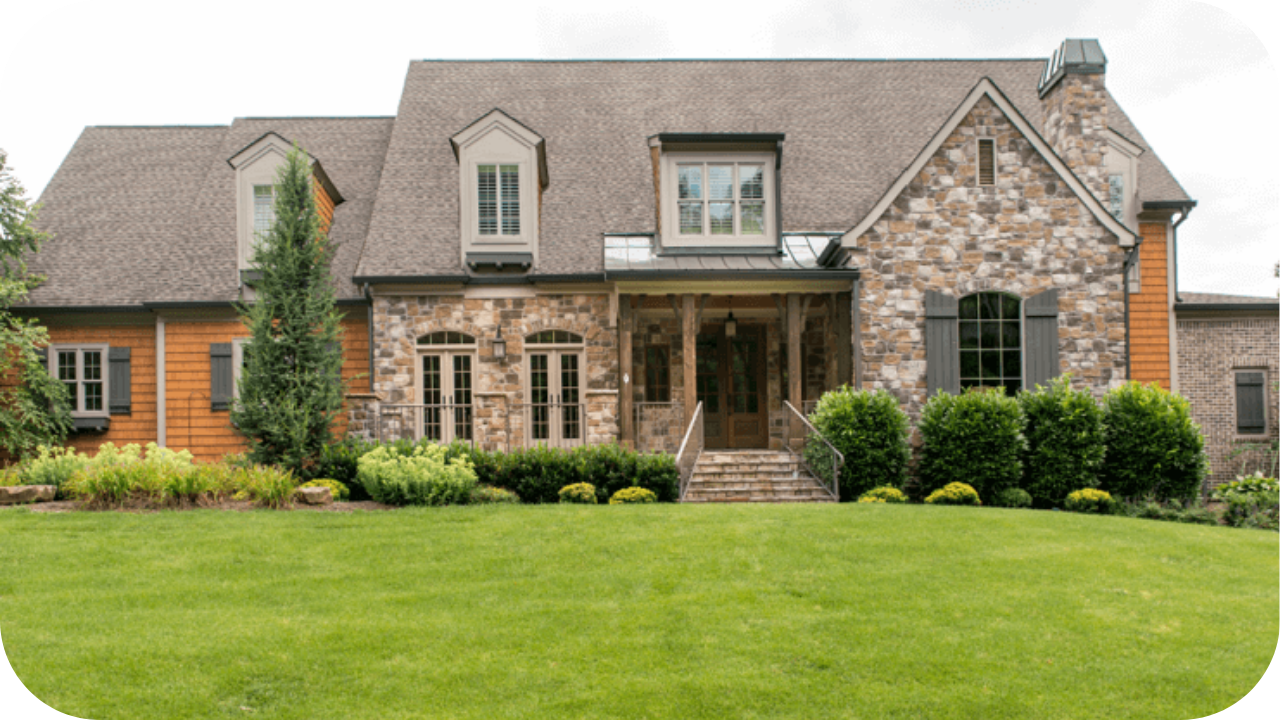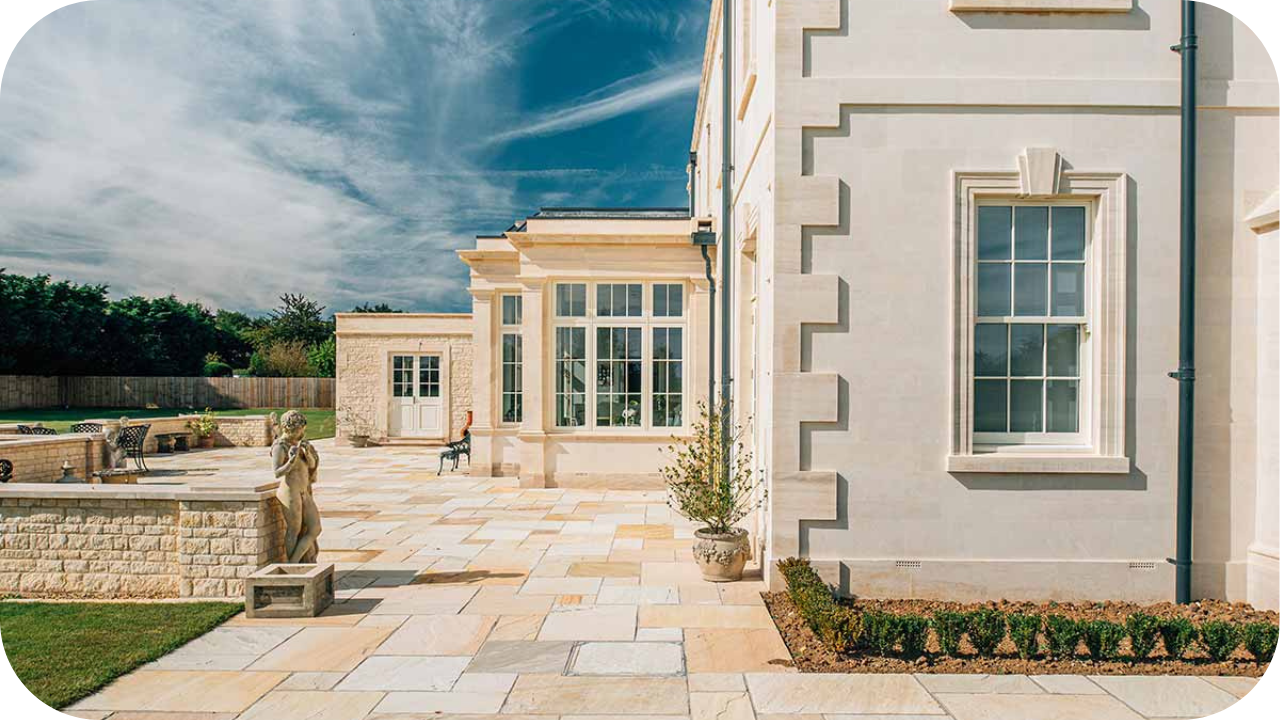
Need help to breathe life into your dull landscape?
Lacklustre gardens often need more character and charm, leaving homeowners satisfied and inspired.
Discover the transformative power of stone in landscaping as we delve into design and implementation principles. Learn how to revitalise your outdoor space and create a captivating environment that reflects your style and personality.
Understanding the Role of Stone in Landscaping
Understanding the role of stone in landscaping is essential for creating visually appealing and functional outdoor spaces. Stones serve multiple purposes, from providing structural support to adding aesthetic value.
They act as natural barriers, defining boundaries and creating visual interest in the landscape. Additionally, stones help with erosion control, preventing soil runoff and maintaining the integrity of garden beds.
Regarding aesthetics, stones come in various shapes, sizes, and colours, allowing endless design possibilities. They can be used as focal points, accents, or pathways, adding texture and depth to the landscape.
Principles of Design in Stone Landscaping
- Balance: To achieve visual stability, distribute stones evenly throughout the landscape, considering factors like size, shape, and texture to create a harmonious arrangement.
- Proportion: Ensure that the sizes of stones are in proportion to the overall scale of the landscape and other elements within it. This involves selecting stones that complement the size of plants, structures, and open spaces to maintain a sense of harmony.
- Unity: Create a cohesive and integrated design using stones with similar characteristics, such as colour, texture, or style. Consistency in material choices and design themes helps tie the landscape together, enhancing its overall appearance.
- Rhythm: Repeat certain stone elements or patterns to establish visual flow and movement in the landscape. This repetition can create a sense of continuity and guide the eye smoothly through the space, enhancing the overall visual experience.
- Focalisation: Strategically place stones to direct the viewer to key focal points within the landscape. Whether highlighting a central feature like a fountain or drawing attention to a specific area of interest, thoughtful stone placement can accentuate focal points and add visual interest to the landscape.
Selection of Stone Materials
Here’s a step-by-step guide on selecting stone materials for landscaping:
- Identify Purpose: Determine the intended use of the stone within the landscape, whether it’s for pathways, retaining walls, decorative features, or other applications.
- Consider Durability: Choose stone materials that withstand local climate conditions and intended usage. Factors such as weather resistance, hardness, and longevity should be considered.
- Evaluate Aesthetic Appeal: Select stones that complement the overall design aesthetic of the landscape. Consider colour, texture, and shape to ensure coherence with existing elements or desired themes.
- Assess Maintenance Requirements: Consider the maintenance needs of different stone materials. Some may require regular sealing, cleaning, or repairs to maintain their appearance and structural integrity.
- Compare Cost: Evaluate the cost of various stone materials, including procurement, transportation, and installation expenses. Balance the desired aesthetic with budget constraints to make an informed decision.
- Consult with Experts: Seek advice from landscaping professionals or suppliers who can provide insights into suitable stone materials based on your specific requirements, local conditions, and budget.
Integration of Stone Features
Integrating stone features into landscaping involves strategic placement and thoughtful design to enhance outdoor spaces’ overall aesthetic and functionality.
- Identify Key Areas: Determine focal points or areas where stone features will be integrated, such as garden borders, water features, or seating areas.
- Harmonise with Surroundings: Select stone materials that complement the existing landscape elements, including plants, architecture, and outdoor furnishings, to create a cohesive design.
- Create Visual Interest: Incorporate various stone features, such as pathways, retaining walls, sculptures, or decorative accents, to add texture, depth, and visual appeal to the landscape.
- Ensure Functionality: Consider the practical use of stone features, such as providing structural support, defining spaces, or improving accessibility, to enhance the usability of outdoor areas.
- Balance Scale and Proportion: Ensure that the size, shape, and placement of stone features are proportionate to the surrounding elements, maintaining a harmonious balance within the landscape.
- Implement with Care: Pay attention to detail during the installation process, ensuring proper placement, alignment, and integration of stone features to achieve the desired aesthetic and functional outcomes.
Planting and Softscape Integration
Integrating planting and softscape elements with stone in landscaping creates a harmonious balance between hardscape and greenery, enhancing outdoor spaces’ overall beauty and functionality.
- Select Complementary Plants: Choose plant species that complement the texture, colour, and style of the stone features, creating visual harmony within the landscape.
- Consider Scale and Proportion: Ensure plants’ size and growth habits are proportional to the surrounding stone elements, maintaining balance and preventing overcrowding or overshadowing.
- Define Planting Zones: Establish designated planting zones within the landscape, integrating plants around and between stone features to soften edges, create transitions, and add natural beauty.
- Incorporate Variety: Introduce a diverse selection of plants, including trees, shrubs, ground covers, and perennials, to add layers of texture, colour, and seasonal interest to the landscape.
- Plan for Maintenance: Consider the maintenance requirements of plants, including watering, pruning, and fertilising, to ensure their health and vitality alongside stone features.
- Adapt to Site Conditions: Select plants well-suited to the local climate, soil conditions, and sunlight exposure, ensuring long-term viability and minimising maintenance needs.
Practical Considerations for Implementation
Implementing stone in landscaping requires attention to practical considerations to ensure successful execution and long-term enjoyment of the outdoor space.
- Site Preparation: Properly prepare the site by clearing debris, levelling the ground, and addressing drainage issues to create a stable foundation for stone installation.
- Material Selection: Choose high-quality stone materials suited to the intended use and local climate conditions, considering durability, aesthetics, and maintenance requirements.
- Installation Techniques: To ensure structural integrity and longevity, employ appropriate installation techniques for different stone features, such as dry-laying pathways and mortar application for retaining walls.
- Safety Measures: Implement safety measures during installation to protect workers and prevent accidents, including wearing protective gear, using proper tools, and adhering to safety guidelines.
- Maintenance Planning: Develop a maintenance plan that includes regular cleaning, sealing, and repairs to preserve the beauty and functionality of stone features over time.
- Budget Management: Establish a realistic budget that accounts for material costs, labour expenses, and unforeseen contingencies. This will allow for efficient project management and cost control.
Case Studies and Examples
1: Natural Harmony: Stone Integration in Japanese Zen Garden
In this case study, we explore the implementation of stone in a traditional Japanese Zen garden in Kyoto, Japan. The garden features carefully arranged stones, gravel pathways, and minimalist vegetation, creating a serene and contemplative atmosphere.
Large boulders are strategically placed to represent mountains, while smaller stones symbolise islands amidst the gravel “sea.”
The careful selection and placement of stones reflect the principles of balance, proportion, and focalisation inherent in Japanese garden design. Visitors are invited to engage in mindful reflection as they navigate the garden, experiencing a sense of harmony and tranquillity amidst the natural elements.
2: Rustic Elegance: Stone Features in Mediterranean-Inspired Landscape
In this case study, we examine the incorporation of stone features in a Mediterranean-inspired landscape located in Provence, France. The landscape showcases the use of locally sourced limestone for retaining walls, terraces, and paving, echoing the rustic charm of the region’s architectural heritage.
Dry-laid stone walls delineate garden beds, while flagstone pathways meander through aromatic herb gardens and vibrant flowering shrubs. The stone’s warm hues and weathered textures harmonise with the sun-drenched surroundings, evoking a sense of timeless elegance and pastoral beauty.
3: Modern Serenity: Stone Elements in Contemporary Urban Oasis
In this case study, we explore the innovative use of stone elements in a contemporary urban oasis in Manhattan, New York. The landscape design incorporates sleek lines and minimalist aesthetics, with carefully curated stone features adding a natural elegance amidst the urban hustle and bustle.
Large granite slabs are utilised as seating areas and focal points, while polished river rocks create tranquil water features and accents throughout the space. The contrast between the rugged texture of the stone and the clean lines of the surrounding architecture creates a dynamic visual appeal.
Sustainability and Eco-Friendly Practices
Incorporating sustainability and eco-friendly practices into stone landscaping projects is essential for minimising environmental impact and promoting long-term stewardship of natural resources.
- Material Selection: Choose locally sourced stone materials to reduce carbon emissions associated with transportation. Opt for natural stone over synthetic alternatives, as it is more durable and requires less energy-intensive production processes.
- Porous Surfaces: Use permeable paving materials like gravel or porous pavers to allow rainwater to infiltrate the ground and recharge groundwater supplies. This helps mitigate stormwater runoff and reduces the risk of flooding and erosion.
- Water Conservation: Design water-efficient landscapes by incorporating drought-tolerant plants and minimising the use of irrigation systems. Utilise rainwater harvesting techniques to capture and reuse water for irrigation, reducing reliance on potable water sources.
- Native Plantings: Select native plants for landscaping projects, as they are well-adapted to local climate conditions and require less water, fertiliser, and pesticides to thrive. Native plantings also provide habitat for local wildlife and contribute to biodiversity conservation.
- Sustainable Practices: Implement erosion control measures, such as retaining walls and vegetative buffers, to prevent soil erosion and sedimentation in waterways. Practice responsible land management techniques, such as proper site preparation and soil conservation, to minimise disturbance to natural ecosystems.
Future Trends and Innovations
Exploring future trends and innovations in stone landscaping reveals a shift towards sustainable practices, technological advancements, and creative design solutions.
- Sustainable Materials: Expect an increased emphasis on using sustainable and locally sourced stone materials to minimise environmental impact and promote eco-friendly practices.
- Smart Integration: Advancements in technology will enable the integration of intelligent features into stone landscaping, such as automated irrigation systems, lighting controls, and remote monitoring capabilities for enhanced efficiency and convenience.
- Innovative Designs: Look for creative design concepts that push the boundaries of traditional stone landscaping, including modular stone structures, kinetic installations, and interactive elements that engage users and evoke emotional responses.
- Climate Resilience: With changing climate patterns and increased weather extremes, anticipate developing stone landscaping solutions prioritising resilience and adaptability, such as porous pavements, green infrastructure, and resilient planting schemes.
- Artistic Expression: Future trends may embrace the intersection of art and landscape design with sculptural stone installations, mosaics, and bespoke creations that elevate outdoor spaces into immersive works of art.
Conclusion
Embracing design principles and implementation in stone landscaping unlocks endless possibilities for creating captivating outdoor spaces.
Take the first step towards transforming your landscape with stone—explore innovative designs, prioritise sustainability, and unleash your creativity to craft an outdoor sanctuary that reflects your unique style and vision.
More To Explore

Hamptons-Style Homes and the Right Stone to Match
Hamptons-style homes are synonymous with timeless elegance, offering a perfect blend of coastal charm and sophisticated design. With their light, airy feel and use of

Luxury Looks: Styling Stone in Contemporary Homes
Stone has long been associated with luxury, and in contemporary homes, it brings sophistication and timeless charm. From sleek marble countertops to the warmth of


